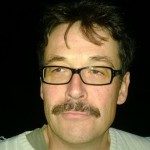Link to Pubmed [PMID] – 9502604
Am. J. Trop. Med. Hyg. 1998 Feb;58(2):195-203
Genetic analysis of the number of Plasmodium falciparum genotypes per infected person in regions of holoendemic and hyperendemic malaria suggest that in areas of lower transmission intensity, significantly fewer parasite genotypes per infected person should be found. A predominance of single clone infections in the human population could generate the controversial clonal population structure proposed for P. falciparum by Tibayrenc and others. Characterization of P. falciparum from individuals on the Thai-Burmese border, an area of hypoendemic transmission, revealed a higher number of genotypes per infected person than that predicted. Possible reasons for this observation are discussed, with particular attention paid to human migration and multidrug resistance.

